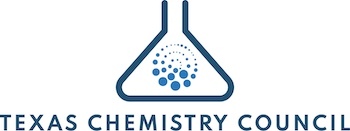Complete Story
03/25/2025
Logan's Legal & Regulatory Corner
In only two and half months into 2025, many of the legal and regulatory topics TCC has been tracking on the national environmental stage have been put on pause or in some cases in full reverse. This is a welcome change in some ways, but also brings uncertainty on how durable the changes will be.
This process started when the Trump Administration issued several executive orders swiftly after inauguration, including a Regulatory Freeze. This freeze resulted in unpublished or pending environmental rules being remanded back to the EPA, several recently published rules received additional time to comment, and many cases litigating final rules put on hold.
The new EPA Administrator Lee Zeldin was confirmed in the Senate and has similarly acted quickly to evaluate all aspects of the agency. In February he announced the Powering the Great American Comeback Initiative, which includes five pillars that will guide the agency:
- Clean Air, Land, and Water for Every American
- Restore American Energy Dominance
- Permitting Reform, Cooperative Federalism, and Cross-Agency Partnerships
- Make the U.S. the AI Capital of the World
- Protecting and Bringing Back American Auto Jobs
Focusing on the third pillar, Zeldin explained that “any business that wants to invest in American should be able to do so without having to face years-long, uncertain, and costly permitting processes.” This will be a great opportunity to engage with EPA to help identify ways to improve efficiency.
On March 12, 2025, EPA announced the reconsideration of 31 agency actions, including:
- Risk Management Program Rule
- Multiple NESHAPS applicable to the manufacturing sector
- PM 2.5 NAAQS
- 2009 Endangerment Finding and associated regulations
- Greenhouse Gas Reporting Program
- “Waters of the United States” (WOTUS) rule to provide clear and simple direction on jurisdiction consistent with Supreme Court precedent
Focusing on Texas, two cases TCC has been monitoring have received positive resolutions with opinions coming out towards the end of February.
In PACAN v. TCEQ, the Texas Supreme Court responded to the 5th Circuit’s certified question concerning the definition of “Best Available Control Technology.” SCOTX explained the statutory text remains key in the interpretation and technologies in permits need to at least be currently available, technically practicable, and economically reasonable. The court also reaffirmed TCEQ’s discretion in deciding appropriate BACT for permitting and is not necessarily controlled by controls in previously issued permits.
In TCEQ, et al. v. San Antonio Estuarine Waterkeeper, the new 15th Court of Appeals grappled with the interpretation of “affected person” and TCEQ’s discretion to grant or deny its determination. In the end, the court reversed the Travis County judge and explained the TCEQ had a sufficient basis to deny “affected person” status because the requestors could not demonstrate their interests were any different than the general public.
This opinion came at a critical time when the TCEQ was considering the discharge permit for the Inner Harbor Desalination on March 13, 2025. In a crowded Commissioners’ Agenda meeting, the TCEQ followed similar logic to deny two main groups of requestors seeking “affected person” status and unanimously approved the discharge permit.

